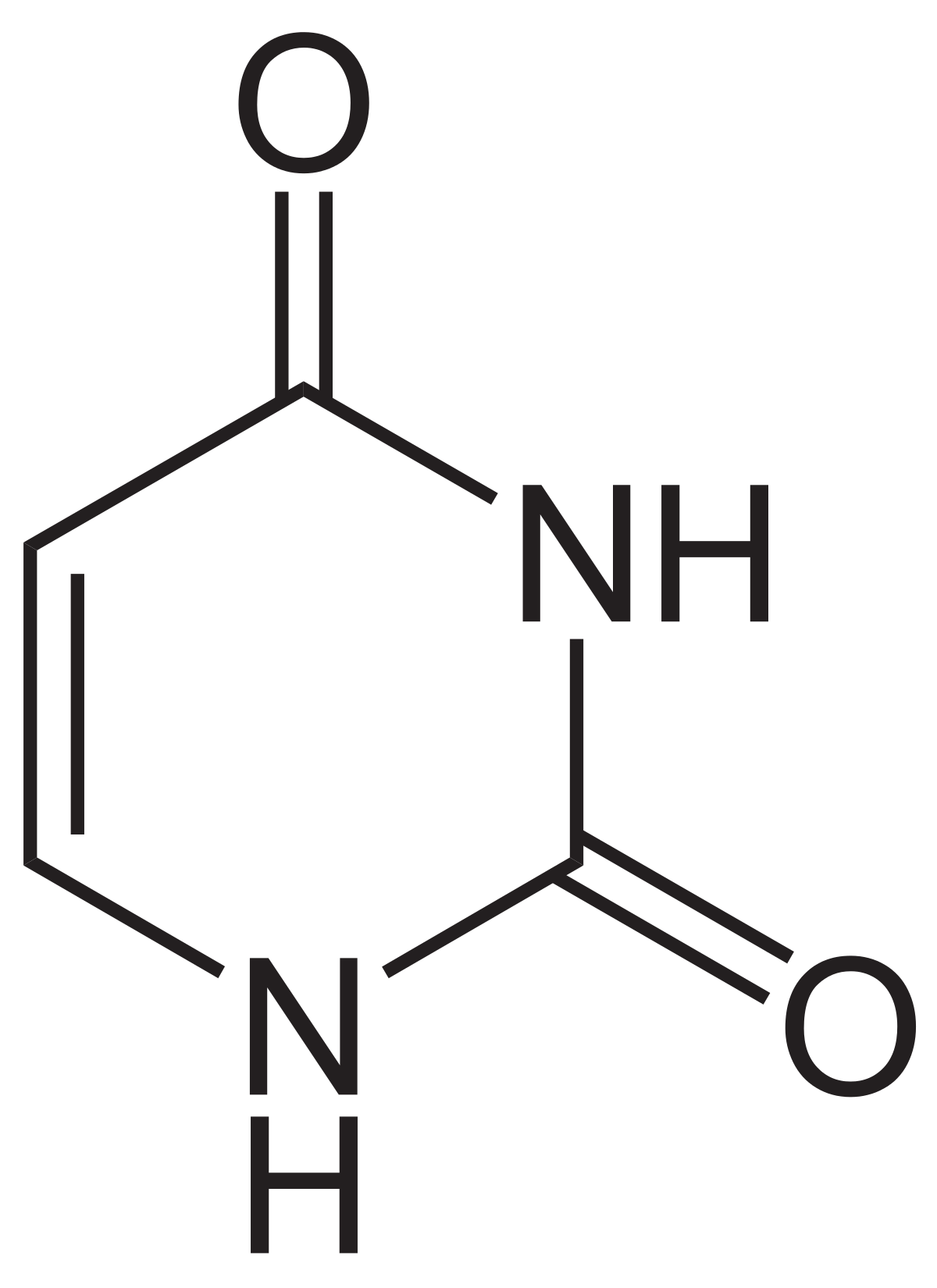Uracil (U) in RNA: Essential Nucleobase Pairing with Adenine
What is Uracil?
Uracil is one of the four nucleobases found in RNA (ribonucleic acid). It is a pyrimidine derivative, meaning it has a single-ring structure. In RNA, uracil pairs with adenine (A), another nucleobase, through hydrogen bonding. This pairing is crucial for the proper function and structure of RNA molecules.

Discovery and Historical Significance of Uracil
Uracil was first discovered in 1900 by the Italian chemist Alberto Ascoli, who isolated it from yeast nucleic acids. However, its role as a nucleobase in RNA was not established until the 1940s, when the structure of DNA and RNA was elucidated.
The discovery of uracil and its pairing with adenine in RNA was a crucial milestone in understanding the genetic code and the central dogma of molecular biology. This knowledge laid the foundation for the field of molecular genetics and paved the way for numerous biotechnological applications.
Uracil vs. Thymine
Uracil is often compared to thymine (T), which is the nucleobase that takes its place in DNA. Both uracil and thymine pair with adenine, but they differ in their chemical structure. Thymine has an additional methyl group (-CH3) attached to its pyrimidine ring, while uracil lacks this group.
The Role of Uracil in RNA
Uracil plays several important roles in the structure and function of RNA:
Base Pairing
Uracil forms base pairs with adenine through hydrogen bonding. This pairing is essential for the proper folding and stability of RNA molecules, such as messenger RNA (mRNA), transfer RNA (tRNA), and ribosomal RNA (rRNA).
Protein Synthesis
Uracil is a key component of the genetic code. In mRNA, the genetic information is encoded using codons, which are triplets of nucleotides. Uracil is part of several codons that specify different amino acids, the building blocks of proteins. For example, the codon UUU codes for the amino acid phenylalanine.
RNA Stability
The presence of uracil in RNA contributes to its overall stability. RNA is more susceptible to hydrolysis (breaking down in the presence of water) compared to DNA, partly due to the absence of the methyl group in uracil. This instability allows RNA to be more easily degraded when it is no longer needed, which is important for regulating gene expression.
Uracil and Mutations
Uracil can also be involved in mutations, which are changes in the genetic material. One type of mutation, called a point mutation, occurs when a single nucleotide is changed. In RNA, a point mutation can involve the substitution of uracil with another nucleobase, such as cytosine (C) or guanine (G). These mutations can potentially alter the amino acid sequence of the resulting protein, which may affect its function.
Uracil Derivatives and Modifications
Uracil can undergo various modifications that expand its roles in RNA biology. Some examples include:
Pseudouridine (Ψ)
Pseudouridine is an isomer of uracil, meaning it has the same chemical formula but a different structure. It is often referred to as the "fifth nucleotide" due to its abundance in RNA. Pseudouridine enhances the stability and function of RNA molecules.
Dihydrouridine (D)
Dihydrouridine is a modified nucleoside that is commonly found in tRNA. It is formed by the reduction of uracil, which increases the flexibility of the tRNA molecule and facilitates its interactions with the ribosome during protein synthesis.
Uracil-Related Diseases
Disorders involving uracil metabolism or incorporation can lead to various health problems:
Orotic Aciduria
Orotic aciduria is a rare genetic disorder caused by a deficiency in the enzyme uridine monophosphate synthase (UMPS), which is involved in the synthesis of uracil nucleotides. This deficiency leads to the accumulation of orotic acid, a precursor of uracil, in the body. Symptoms include growth retardation, anemia, and intellectual disability.
Fluorouracil Toxicity
Fluorouracil (5-FU) is a chemotherapy drug that is structurally similar to uracil. It interferes with the synthesis of thymidine, disrupting DNA replication and cell division in cancer cells. However, some individuals have a deficiency in the enzyme dihydropyrimidine dehydrogenase (DPD), which breaks down 5-FU. This can lead to the accumulation of the drug and severe toxicity, causing symptoms such as neutropenia, mucositis, and neurotoxicity.
Uracil in Biotechnology
Uracil and its derivatives have various applications in biotechnology:
RNA Therapeutics
RNA-based therapies, such as small interfering RNA (siRNA) and antisense oligonucleotide (ASOs), rely on the specific base-pairing properties of uracil to target and regulate disease-related genes.
Synthetic Biology
In synthetic biology, researchers can design and engineer RNA molecules with specific functions by manipulating the sequence of uracil and other nucleobases. This enables the creation of synthetic regulatory elements, aptamers, and ribozymes.
Further Reading
Experimental & Molecular Medicine, Detection technologies for RNA modifications
Nature Reviews Genetics, RNA Modifications: What Have We Learned and Where Are We Headed?
